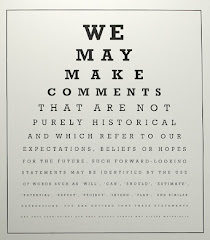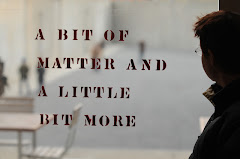ASPECT is a biannual DVD magazine of new media art. The mission of the publication is to distribute and archive works of time-based art. Each issue highlights artists working in new or experimental media, whose works are best documented in video or sound.
OPEN CALL—VOLUME 12: VITAL SEPTEMBER 26, 2007
ASPECT SEEKS NEW MEDIA ART SUBMISSIONS FOR VOLUME 12: VITAL
Due by March 26, 2008—ASPECT: The Chronicle of New Media Art, a biannual dvd publication, is currently accepting submissions of work best documented in a time-based format for Volume 12: Vital. This issue will explore that which is essential, grave, indispensable, and/or critical to existence.
The staff of ASPECT is asking curators, art critics, and members of the contemporary art community to help assemble and comment on works for the next issue by submitting a work of art on which they wish to provide audio commentary. Due to the format of the publication, the criteria for selection will include both the qualifications of the commentator and the quality of the work submitted. Audio recordings of the commentary will be assembled after the submissions have been selected.
Submissions should include:
- Video documentation of a work or small group of works by a single artist (no more than 15 minutes in length)
- A brief (100 word) statement regarding the submitted work
- Resume of the artist
- Contact information for the commentator and artist
- Resume of the commentator
- Brief notes outlining the contents of the proposed commentary
- If you would like us to return your materials, please include a SASE. Otherwise, we will keep your work on file for further consideration.
Submissions must be received by March 26, 2008 and sent to:
ASPECT: The Chronicle of New Media Art
46 Waltham Street, suite 103
Boston, MA 02118
617.695.0500
All artists will be contacted via email regarding their submission no later than April 28, 2008
Friday, February 22, 2008
Distribution systems
See online panel discussion at MIT World here:
Reproduction, Mimicry, Critique and Distribution Systems in Visual Art
MODERATOR:
Bill Arning
Curator, List Visual Arts Center, MIT
PANELISTS:
Michael Mittelman: Artist, and Founder and editor, ASPECT: The Chronicle of New Media Art
Aspect website
Tony Cokes: Artist and Researcher, Brown University
Cokes' Brown website
Andres Laracuente: Artist
Online gallery site with Laracuente's art
View.
See online panel discussion at MIT World here:
Reproduction, Mimicry, Critique and Distribution Systems in Visual Art
MODERATOR:
Bill Arning
Curator, List Visual Arts Center, MIT
PANELISTS:
Michael Mittelman: Artist, and Founder and editor, ASPECT: The Chronicle of New Media Art
Aspect website
Tony Cokes: Artist and Researcher, Brown University
Cokes' Brown website
Andres Laracuente: Artist
Online gallery site with Laracuente's art
View.
Thursday, February 14, 2008

Lawrence Weiner, Vienna, 1991, Wiener Festwochen, Flakturm im Esterházypark. Photo by Christian Wachter.
Conceptual art is a visual art that is not retinal, or at least resists appealing to sight at the expense of thought. It often manifests itself in language that assumes the entire burden of compelling the viewer to read the signs on gallery walls. Conceptual art persists and is not amenable to the merchandising that subsequent decades have brought about. Whether they know it or not, formalists of the 1960s presupposed the early modern achievement of Russian and French artists and writers. Conceptual artists as well show the formal and structural bias of manipulating language operationally. Sites formerly intended for live events or “actions” now allow mental operations to substitute for physical behavior. Lawrence Weiner is among the most respected in the loose federation of artists that includes Robert Barry, Douglas Hueber and Joseph Kosuth, and extends to Sol LeWitt, who remains a key figure in artistic formalism. Weiner’s language refers to works both specific and general. In sites that are specific, yet treated categorically, Weiner’s words occupy the book, the gallery, the street, the stage. His words and work act as cultural irritants wherever they appear. Ranging from mildly to aggressively interventionist, Weiner’s verbal art uses formalism to drive a wedge into the cultural status quo.
Read Lawrence Weiner by Marjorie Welish
in Bomb Issue 54 Winter 1996, ART
Tuesday, February 12, 2008
Random poetry almost fulfills the dream of Gilles Deleuze, who imagines an ideal game of chance, one whose rules find themselves generated by, and subjected to, chance itself. Such a game results in an aimless outcome so futile that we dismiss the game as a nonsensical dissipation of time—an atelic, if not asemic, activity, not unlike the daydreaming seen in modern, poetic theory: "only thought finds it possible to affirm all chance" for "[i]f one tries to play this game other than in thought, nothing happens, and if one tries to produce a result other than the work of art, nothing is produced"; hence, "[t]his game, which can only exist in thought and which has no other result than the work of art is also that by which thought and art […] disturb […] reality." Only the artisan and the thinker ever dare to play this game because, in it, "there is nothing but victories for those who know how […] to affirm and ramify chance, instead of dividing it in order to dominate it, in order to wager, in order to win."
CHRISTIAN BÖK
Random Poetry 06
CHRISTIAN BÖK
Random Poetry 06
Hugo Ball's "Karawane"
Marie Osmond performing from memory (:32)
http://www.ubu.com/sound/ball.html
And here it is on You Tube (with text).
Marie Osmond performing from memory (:32)
http://www.ubu.com/sound/ball.html
And here it is on You Tube (with text).
CHRISTIAN BÖK
UbuWeb at AWP
... the links to the works on my playlist for the panel entitled "Listen to This"….
UbuWeb at AWP
... the links to the works on my playlist for the panel entitled "Listen to This"….
The Poetry Foundation has a section on Random Poetry. Here is an example :
CHRISTIAN BÖK
Random Poetry 07
"WE"
First utterance of Talking Popcorn
by Nina Katchadourian
-----------------
Nina Katchadourian is a conceptual artist, famous for her eclectic projects, some of which involve her mending a spiderweb or sorting a bookshelf. Often her work consists of either a whimsical intervention into a geographic mapping or an uninvited modification of an ecological terrain. She might, for example, dissect a travel map, extracting all the landmass, while retaining, intact, all the highways—or she might augment a car alarum, installing a new bullhorn, which screeches out a birdcall instead.
Talking Popcorn is a sculpture that consists of a popcorn-machine hooked up to a microphone that transmits these signals to a hidden laptop—one equipped to convert these sounds according to the dictates of Morse Code, after which the computer translates these dits and dahs into a series of English letters for vocalization by its own robot-voice. The artist goes on to transcribe each message from this "oracle," preserving the popcorn in a vacuum-capsule for display alongside these texts.
Katchadourian remarks that "Talking Popcorn blurts out words in many different languages, but ultimately it speaks a 'language' very much its own"—and she has even gone so far as to bronze the first four kernels of popcorn generated by the machine, in order to preserve its inital, spoken utterance—the word "WE" (dit dah dah, dit). Her machine almost seems to literalize the notion of the "soundbite," insofar as each phoneme erupts by chance from the void, only to leave behind its own edible casing.
Katchadourian has, in effect, built an "echo chamber," in which we see letters collide or disband at random, doing so in a way reminiscent of the clinamen described by Lucretius, who draws an analogy between atoms and words in order to suggest that all substances and all utterances result from minute nuclei, erupting and swerving into each other as they fall through the void. Each letter becomes a fugitive particle that might appear, change, or vanish, depending upon such a randomized trajectory….
CHRISTIAN BÖK
Random Poetry 07
"WE"
First utterance of Talking Popcorn
by Nina Katchadourian
-----------------
Nina Katchadourian is a conceptual artist, famous for her eclectic projects, some of which involve her mending a spiderweb or sorting a bookshelf. Often her work consists of either a whimsical intervention into a geographic mapping or an uninvited modification of an ecological terrain. She might, for example, dissect a travel map, extracting all the landmass, while retaining, intact, all the highways—or she might augment a car alarum, installing a new bullhorn, which screeches out a birdcall instead.
Talking Popcorn is a sculpture that consists of a popcorn-machine hooked up to a microphone that transmits these signals to a hidden laptop—one equipped to convert these sounds according to the dictates of Morse Code, after which the computer translates these dits and dahs into a series of English letters for vocalization by its own robot-voice. The artist goes on to transcribe each message from this "oracle," preserving the popcorn in a vacuum-capsule for display alongside these texts.
Katchadourian remarks that "Talking Popcorn blurts out words in many different languages, but ultimately it speaks a 'language' very much its own"—and she has even gone so far as to bronze the first four kernels of popcorn generated by the machine, in order to preserve its inital, spoken utterance—the word "WE" (dit dah dah, dit). Her machine almost seems to literalize the notion of the "soundbite," insofar as each phoneme erupts by chance from the void, only to leave behind its own edible casing.
Katchadourian has, in effect, built an "echo chamber," in which we see letters collide or disband at random, doing so in a way reminiscent of the clinamen described by Lucretius, who draws an analogy between atoms and words in order to suggest that all substances and all utterances result from minute nuclei, erupting and swerving into each other as they fall through the void. Each letter becomes a fugitive particle that might appear, change, or vanish, depending upon such a randomized trajectory….
Subscribe to:
Posts (Atom)







